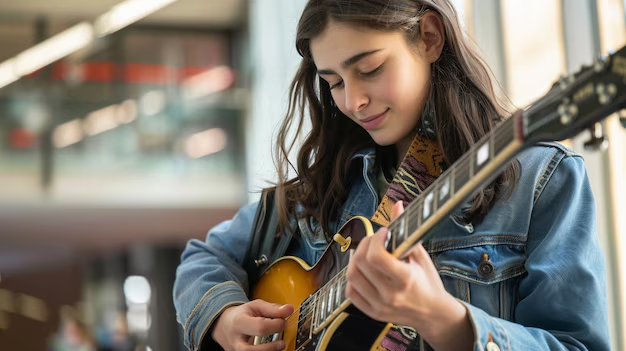Music Sync Licensing Guide is a crucial aspect of the music industry, providing artists and rights holders with opportunities to earn revenue while getting their music featured in films, TV shows, commercials, and more. If you’re an independent musician, producer, or songwriter looking to break into sync licensing, this guide will walk you through everything you need to know.
What Is Music Sync Licensing Guide?
Music synchronization (sync) licensing is the process of granting permission for a piece of music to be used in a visual medium. This includes movies, television, advertisements, video games, and other media formats. The music is “synchronized” with the visuals, enhancing the overall impact of the content.
How Does Sync Licensing Work?
Understanding Copyright in Sync Licensing
Before diving into sync licensing, it’s important to understand the two types of copyright involved:
- Master Rights: Owned by the recording artist, label, or producer.
- Composition Rights: Owned by the songwriter or music publisher.
When a song is licensed for sync, both the master and composition rights must be cleared.
The Sync Licensing Process
- Music Supervisors Search for Songs: Music supervisors or content creators look for tracks that match the mood and tone of their project.
- License Request and Negotiation: If a song is chosen, a request is sent to the rights holders for permission. Negotiations determine the licensing fee.
- Approval and Contract Signing: Once both parties agree, a contract is signed outlining the terms of use, duration, territory, and compensation.
- Payment and Usage: The rights holder receives payment, and the song is used in the visual content.
Types of Sync Licenses
1. TV and Film Sync Licenses
These licenses allow music to be used in television shows, documentaries, and films. The fee depends on factors like prominence in the scene and production budget.
2. Commercial Sync Licenses

Brands and advertisers pay high fees to sync music with commercials. Well-placed songs in ads can significantly boost an artist’s exposure.
3. Video Game Sync Licenses
Video games use background music and in-game soundtracks, requiring sync licenses for distribution.
4. Online Content and Social Media Licenses
Platforms like YouTube, Instagram, and TikTok require sync licensing when incorporating copyrighted music into videos.
How to Get Your Music Licensed for Sync
1. Register Your Music with a PRO (Performing Rights Organization)
Organizations like ASCAP, BMI, or SESAC ensure that you get paid royalties when your music is used publicly.
2. Work with Music Libraries and Sync Agencies
Sync libraries like Musicbed, Pond5, and Artlist connect independent artists with content creators looking for licensed music.
3. Build Relationships with Music Supervisors
Networking with music supervisors increases your chances of landing sync deals.
4. Offer Instrumental Versions
Many content creators prefer instrumental versions of songs for background music.
5. Make Your Music Easy to License

Owning 100% of your music’s rights makes it easier for licensing deals to go through without complications.
How Much Can You Earn from Sync Licensing?
Earnings vary widely based on factors such as the media type, prominence of the placement, and the platform. Typical earnings include:
- TV Show Placements: $1,000 – $50,000
- Film Placements: $5,000 – $500,000
- Commercials: $10,000 – $1,000,000
- Online Content: $100 – $10,000
Sync licensing also provides additional revenue streams through performance royalties and backend payments.
Also Read: How Can Virtual Music Lessons Improve Your Musical Skills?
Conclusion
Music sync licensing is a lucrative way for musicians to earn money and gain exposure. By understanding the process, registering your music, and networking with industry professionals, you can increase your chances of landing sync deals. Whether you are an independent artist or a label, sync licensing can be a game-changer for your music career.
FAQs
1. Do I need a record label to get sync deals?
No, independent artists can get sync deals by working with sync libraries, agencies, or music supervisors directly.
2. How long does it take to get a sync placement?
It varies. Some placements happen quickly, while others take months or even years, depending on the project and licensing negotiations.
3. Can I license cover songs for sync?
Yes, but you must obtain proper clearance from the original song’s copyright holders.
4. What is the best way to pitch my music for sync licensing?
Create a professional portfolio, register with sync agencies, and directly reach out to music supervisors with tailored pitches.
5. Do sync deals provide ongoing royalties?
Yes, in addition to the upfront sync fee, you may earn performance royalties when your music is broadcasted on TV or radio.




